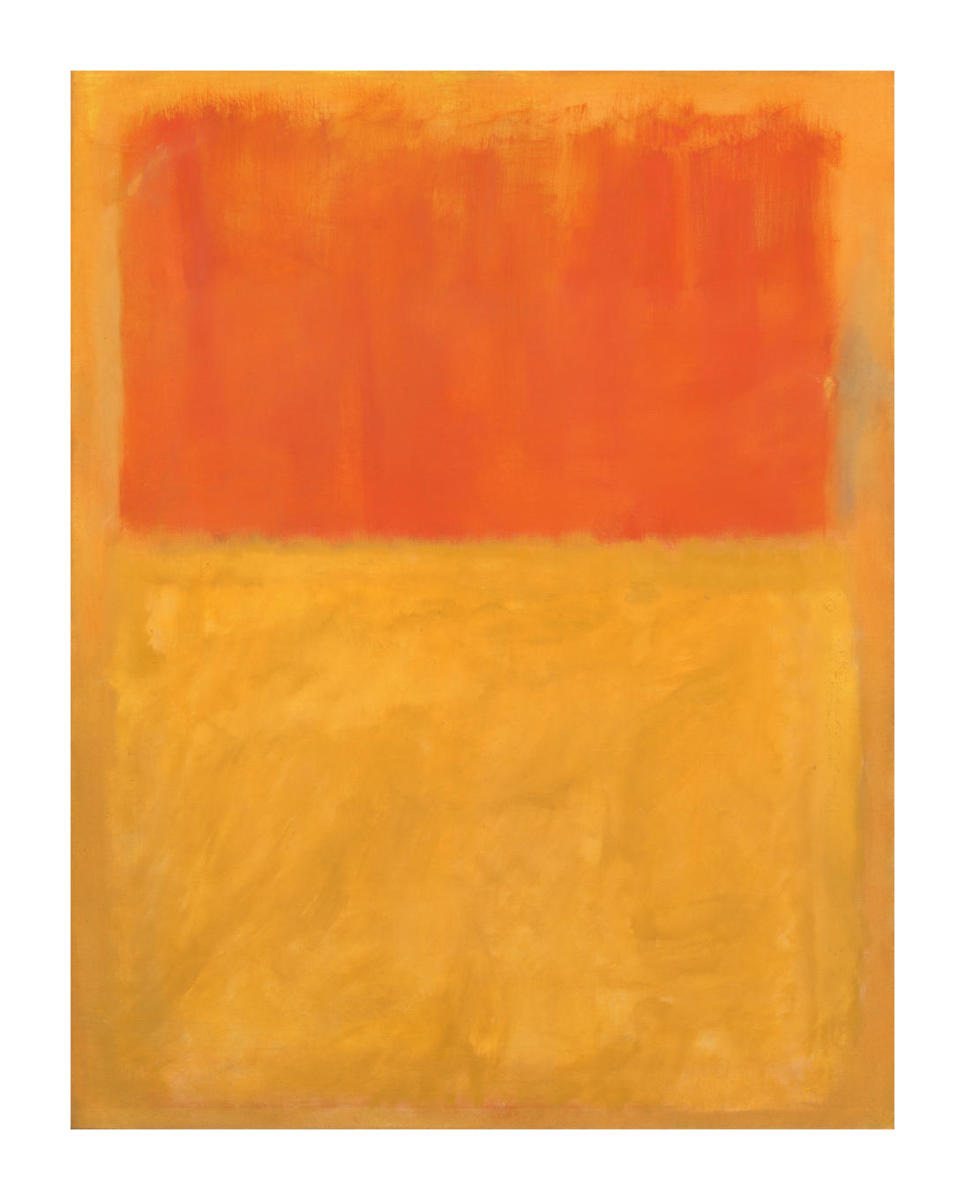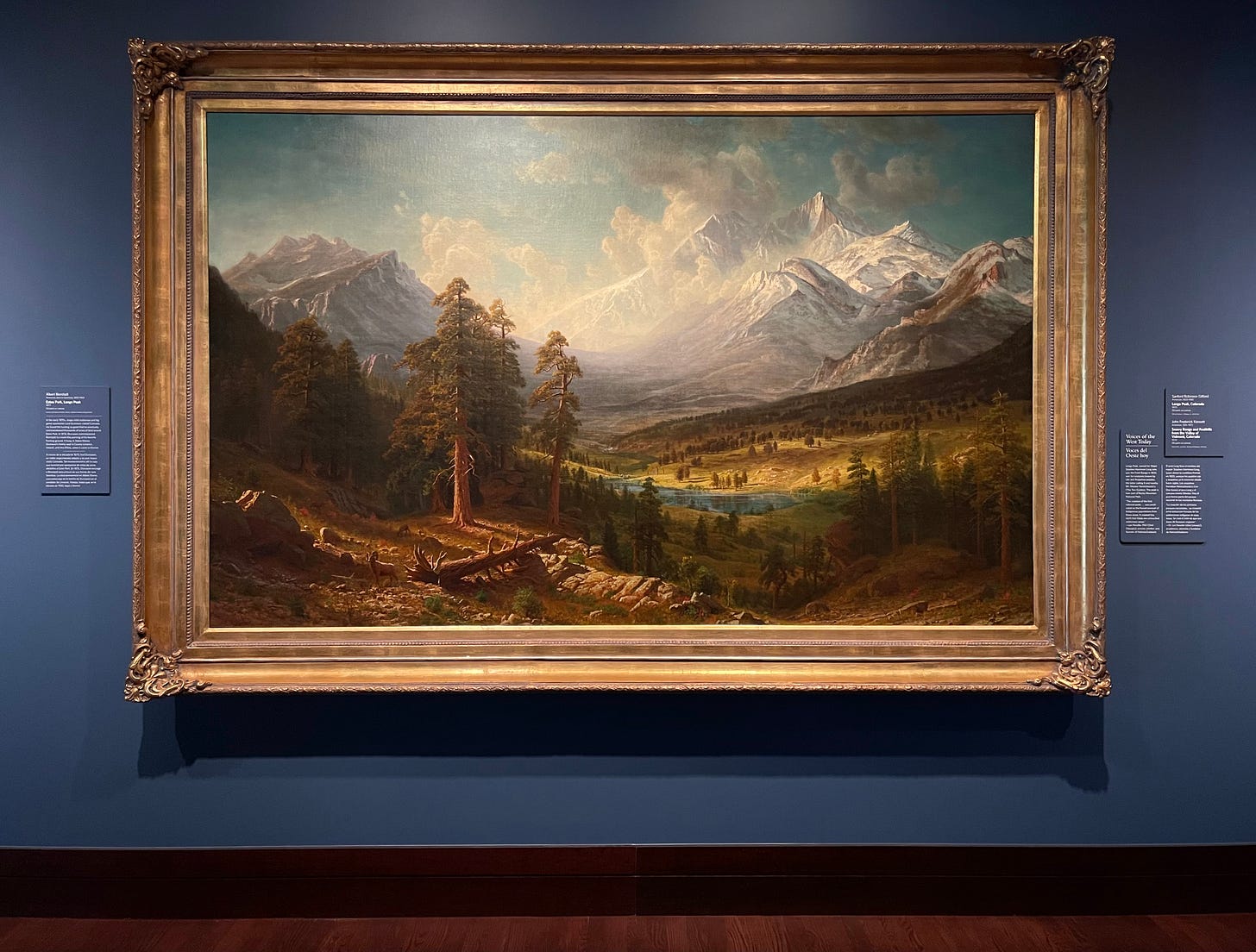This is an expansion of some ideas I first posted on Instagram a couple months ago. If you’re joining me from there thank you and welcome!
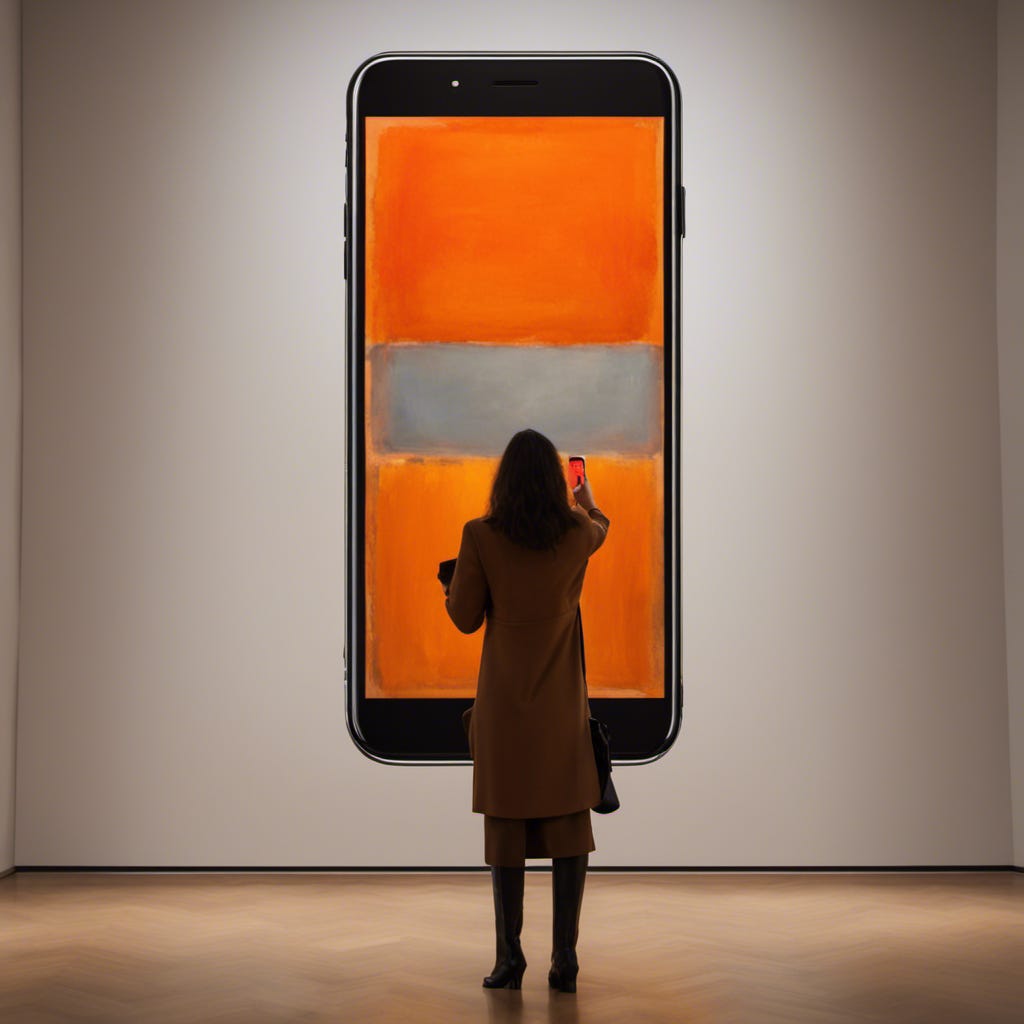
Three inches. Most images in the world today are “read” at this scale: the width of an average smartphone screen. That tiny conglomeration of pixels and the split-second speed at which images are consumed leaves us in a state of unconscious longing—longing for something physical, for something lasting and for something that has a relationship to our bodies rather than our eyes. That feeling of suspended dissatisfaction that looking at images and videos on smartphones provokes is essentially sold as time to advertisers. It’s a bizarre trade—trading our time in our bodies and in the world for time looking at tiny images and videos and snippets of text.
Increasingly, I think the role of artists is to assert the value of our bodies by asserting the value of objects and experiences that might engage our bodies (or that formerly engaged our bodies). Life shouldn’t be so…optical. And images shouldn’t be so small and so cheap. This is something I think about a lot as a visual artist and an art professor.
I started making artwork with smartphones in 2018. At the time I was literally embedding them in paintings to see what reactions they would prompt. Unsurprisingly, it was difficult for viewers to appreciate or even look at the painted surface with the glowing screen nearby or inside. More recently I’ve been playing with phones as substrates or as physical painting tools — trading out brushes for devices.
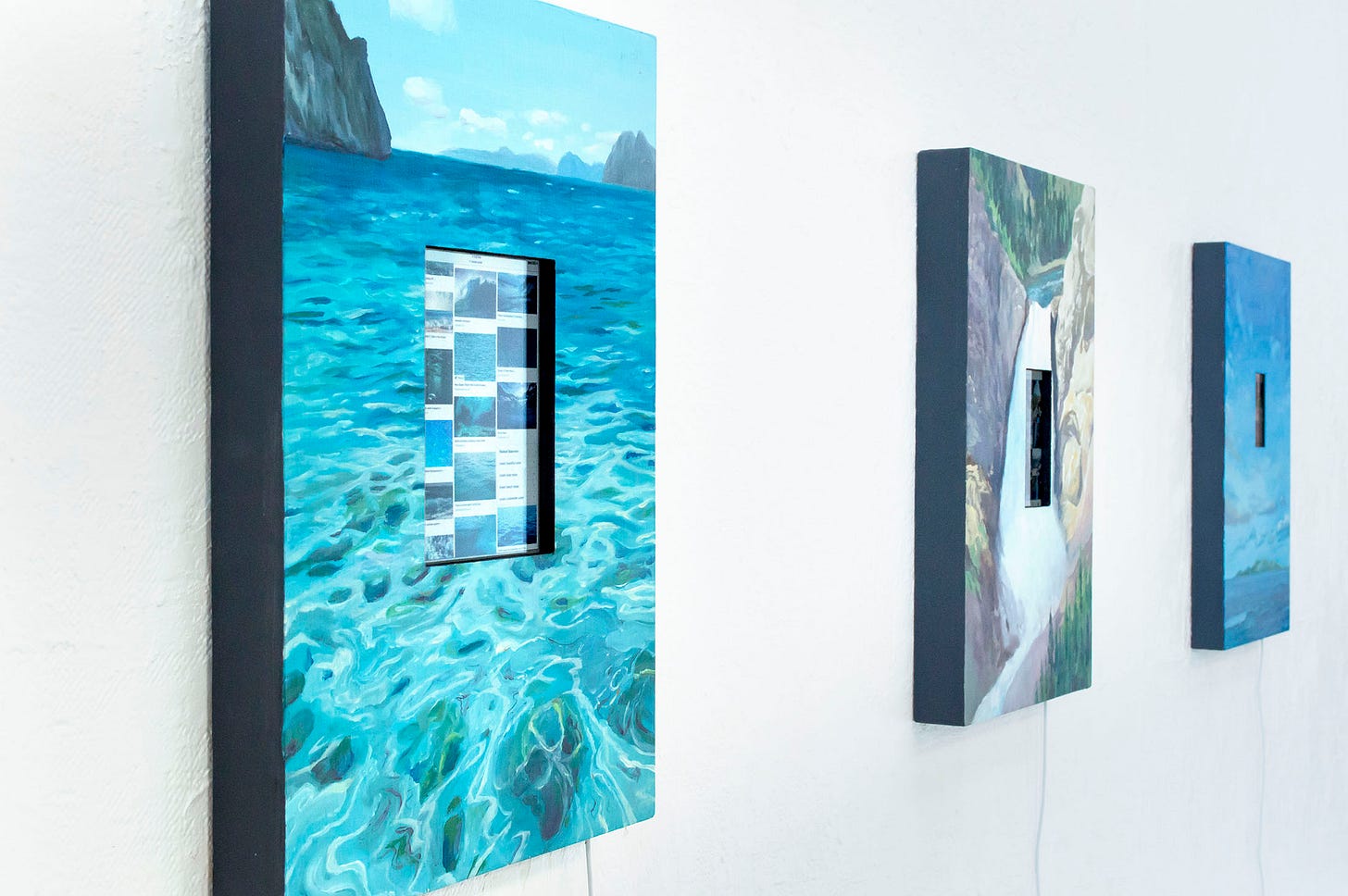

What’s scale got to do with it?
Before going any further I should acknowledge that “make it bigger!” is a thing that male art professors in particular often say about student work. I’ve been guilty of this. There may be something masculine to that inclination to “go big” (my son is currently the world’s biggest monster truck fan). But regardless of your gender identity we homo sapiens are stuck in these specific, human-sized bodies that have evolved for particular purposes. Considering scale is vital to creative work and it influences all of human experience.Here’s a few examples of works I made in the last few years that play with size and scale:

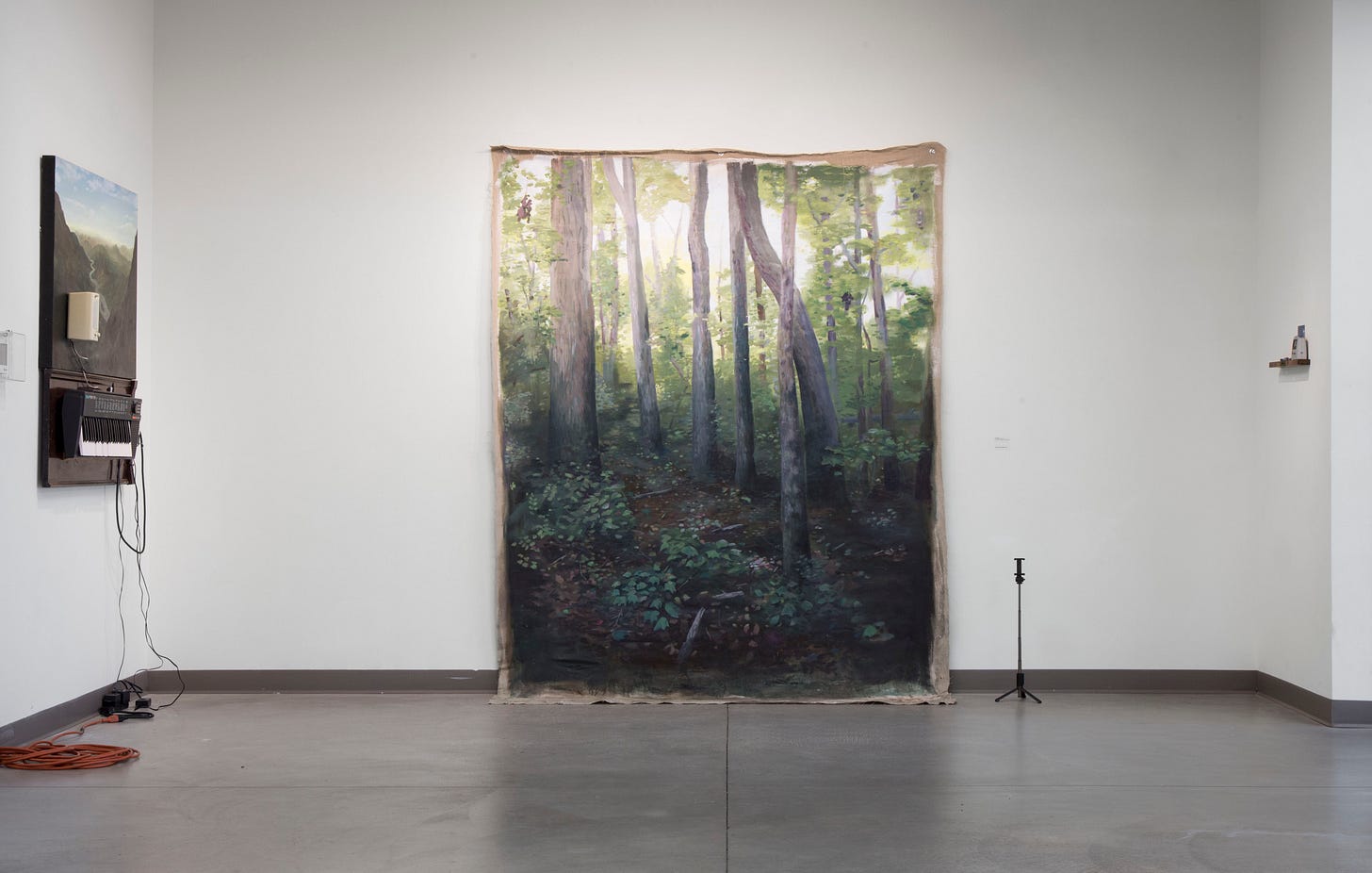
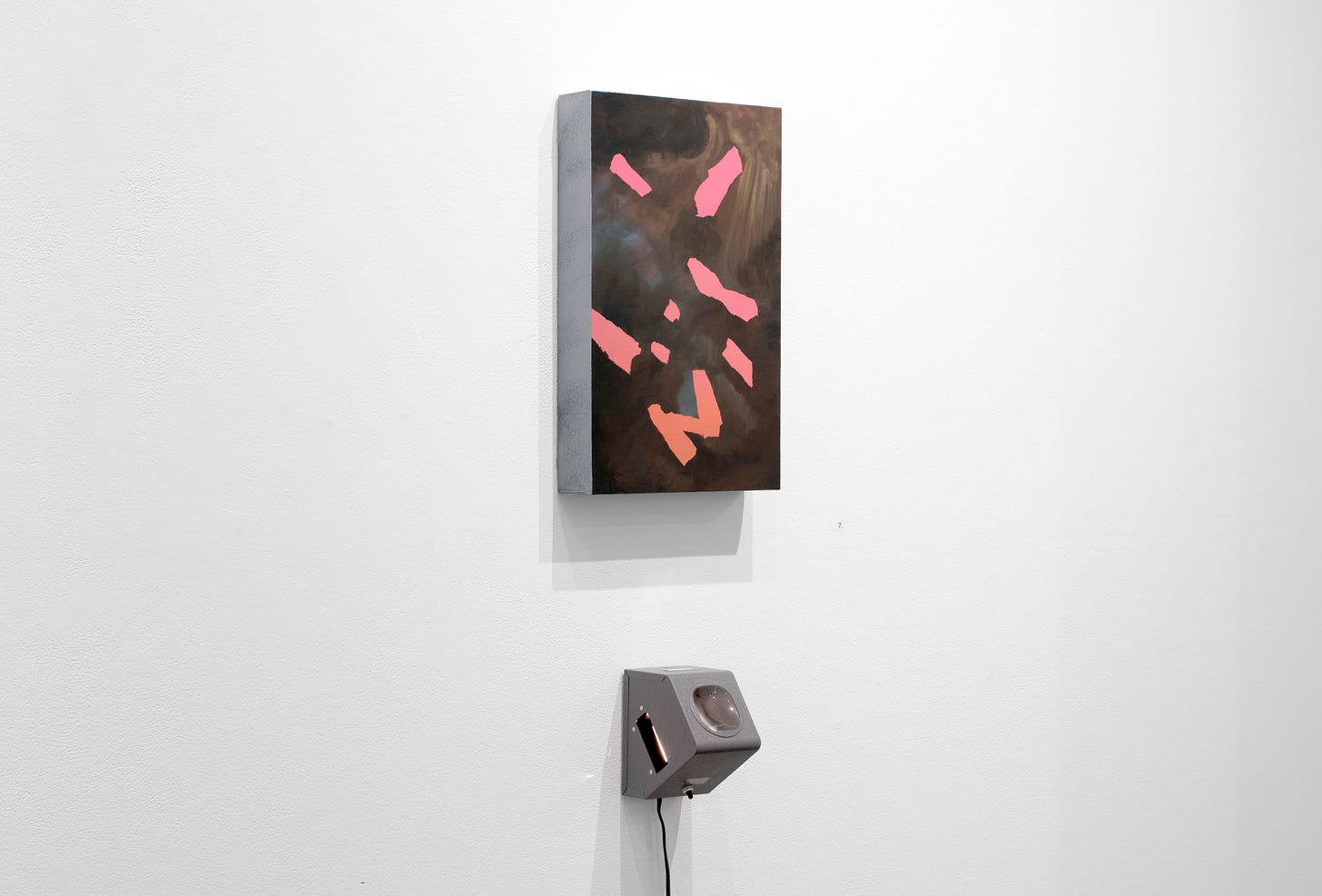
When we behold a flower or something in nature that is a small size, we recognize its magical smallness in relation to our hands and bodies and in relation to the entire universe. This is in part what gives cuteness to kittens and preciousness to gemstones. The smartphone screen seems to negate its own smallness and absorbs us in ways that are unnatural. We can “navigate” the screen only with one or two of our digits rather than our feet. Our reliance on scale is reflected in pop culture and literature.
In Lewis Carroll's "Through the Looking Glass," when Alice shrinks to three inches and calls the height “wretched” she’s aware that she’s lost something. She has lost the possibility of a certain kind of distinctly human engagement with her surroundings. Immersion and absorption are sensations that live more comfortably in our bodies rather than in our eyes, connected to proprioception and experiences we have in forests and in oceans and desert plains—the kinds of environments our brains were designed for. How long can or should one get lost in a flower? In a gemstone? Unless you’re deep in a Buddhist mediation, not very long.
Take Gollum from LOTR (nerd alert!) whose famous fixation on the ring of power is unsettling. The ring is like a smartphone. Smartphones draw us in. They have a hold on us. We disappear into them. They connect us with the all-knowing eye of the internet—an environment which is often hostile to our individual interests, seeking to watch and manipulate our behavior. Furthermore, when our minds disconnect from our bodies, anxiety increases. The current mental health crisis correlates almost exactly with the dramatic global increase in smart phone use. But it’s not only surveillance, body image, and the casino-like environment of social media. It’s that our phones just don’t allow us into our bodies. They are too small.
Nature provides a lot of ways to understand the importance of scale. We were designed to be in nature, so it’s no surprise that seeing the milky way on a dark night, visiting the Grand Canyon or gazing out at the ocean stir something deep in us. Art too helps us into our bodies and guides our senses in deep and powerful ways. Whereas all images on phones are limited to three inches, the impact of any particular work of art — from sculpture to installation to painting — is closely related to its specific size.
Few artists have illustrated the power and importance of scale as perfectly (and now it seems proleptically) as Mark Rothko. Rothko’s color field paintings are known to provoke serious emotional and even spiritual responses in viewers. Standing in front of a large-scale painting is a full-body experience; it transcends the common relationship between the eye and the brain as waves of color seem to wash over the viewer’s entire body.
In part because of my job as a Professor of Painting/intermedia I’ve developed this habit of thinking of painting in relation to other media and in particular in relation to smartphones. It’s kind of an absurd comparison, I admit: big paintings and tiny smartphones. But that absurdity is precisely why it is useful as a thinking tool. Call it comparative media archeology.
Media archeology is a field of philosophy and critical theory that deals mostly with new media. But it’s an interesting approach for thinking about painting and so-called analog processes, too. Here’s Jussi Parikka who wrote a fascinating book describing the field:
In other words, media critique is not only about saying things, it is about design and materiality – doing critique in an alternative fashion, against the grain, so to speak (see Lovink 2003: 11). Through such material existence, the media-archaeological work puts the spectator/user/viewer into a new relation with the imaginary, and hence forces us to engage creatively with the presence of media – new and old, imagined and real.
― Jussi Parikka, What is Media Archaeology?

Painting is missing from a lot of contemporary conversations about evolving media perhaps because painting seems to exist outside of time. But that is also where painting’s continuing power comes from, and why painting and other so-called analog processes should be considered alongside digital media. There is no teleology. There is no reason we live in this multiverse rather than some other one where pixels don’t exist or where phones are four feet tall or phones are scrolls that roll out or are made of purple cabbage. In the surrealist space between reality and imagination, that’s where artists live and work and where things get exciting.
* * *
Recently, after a conference in Denver I decided on a whim to visit the Denver Art Museum before heading out to the airport. Standing in front of Albert Bierstadt’s painting Estes Park, Long’s Peak from 1877 I had one of those…museum moments, let’s call it. For hours the previous couple days I had been in sterile hotel conference rooms looking at my phone and projections of bullet points. My own presentation—about the impact of A.I. Generated images on painting—was just a few hours before.
Standing in a room painted blue in front of this expansive canvas I had an intense emotional experience as if I were actually standing in front of a dramatic vista. It was as if all the digital noise from the conference drained out of me and spilled into the gallery. But with painting it’s not just the representation of what you are seeing, or a visceral response to color. There’s another level of awe that begins to set in—that human hands and the human imagination is capable of such wondrous feats of rendering and design and composition. That human hands have the power to recreate to understand and analyze and honor any aspect of personal or social experience and represent it merely through colored grease on fabric or through music or whatever other medium. That an artist can transport the viewer to another place and time, to a place and time that seems at once outside of place and time.
Finally, the intellect sets in. It’s inevitable. Much has been written about the imperialist and racist motivations of the Hudson River valley painters. When it comes to Bierstadt paintings in particular, they promoted ideas like Westward Expansion and settler colonialism. Standing in the museum as I remembered all this I had to now do a bit of metacognition: how could I think this painting was so beautiful and should I feel guilty for having this cathartic and even joyous experience in front of it? But this again is part of the wonder of the arts and of painting: that we are transported physically, that time slows down, that we then return to ourselves, and that we must engage also the intellectual part of our being and the part of ourselves that questions even our own thoughts. And then finally, that we bring these experiences with us for the rest of our lives.
Then, I took my phone out to take a picture.




